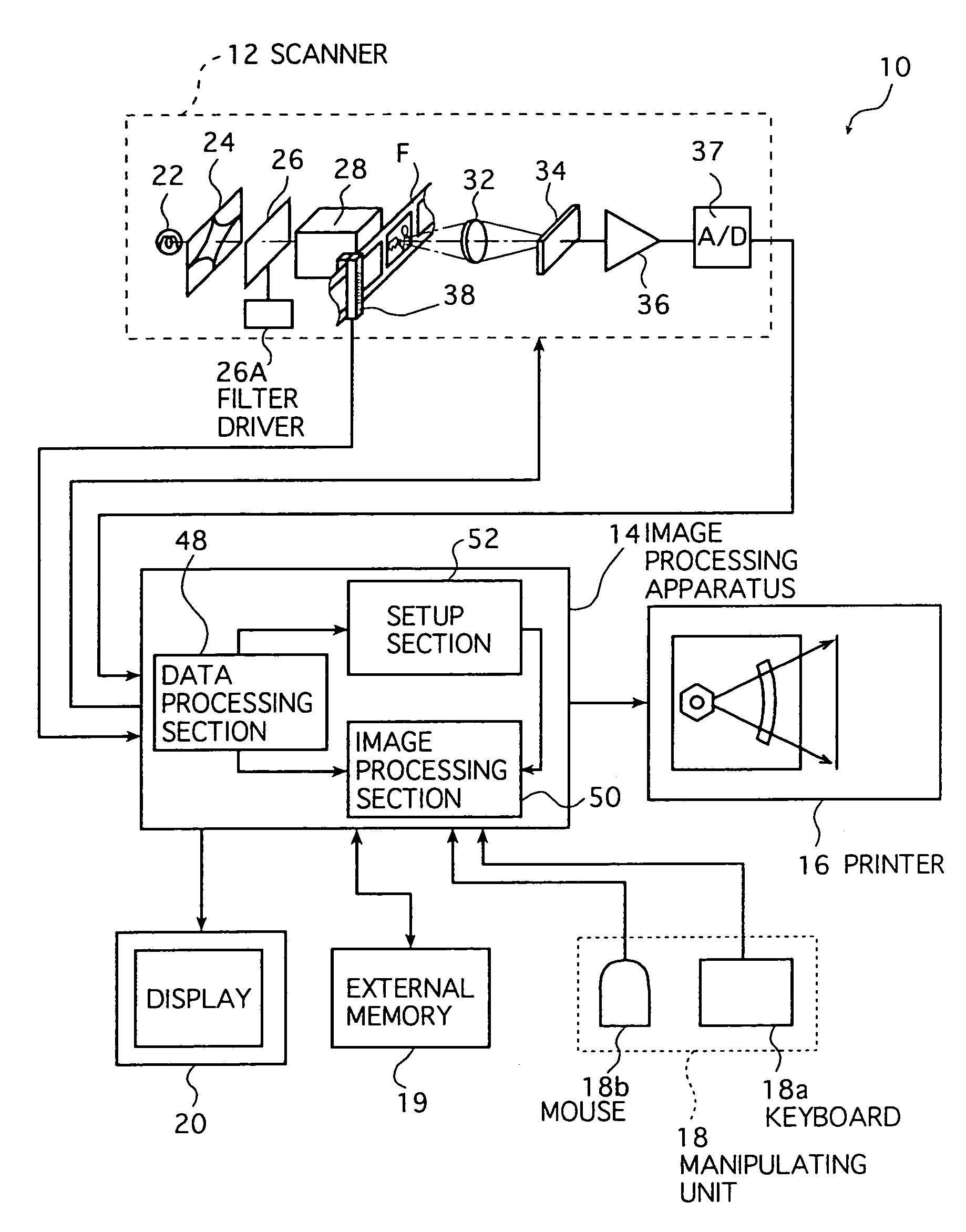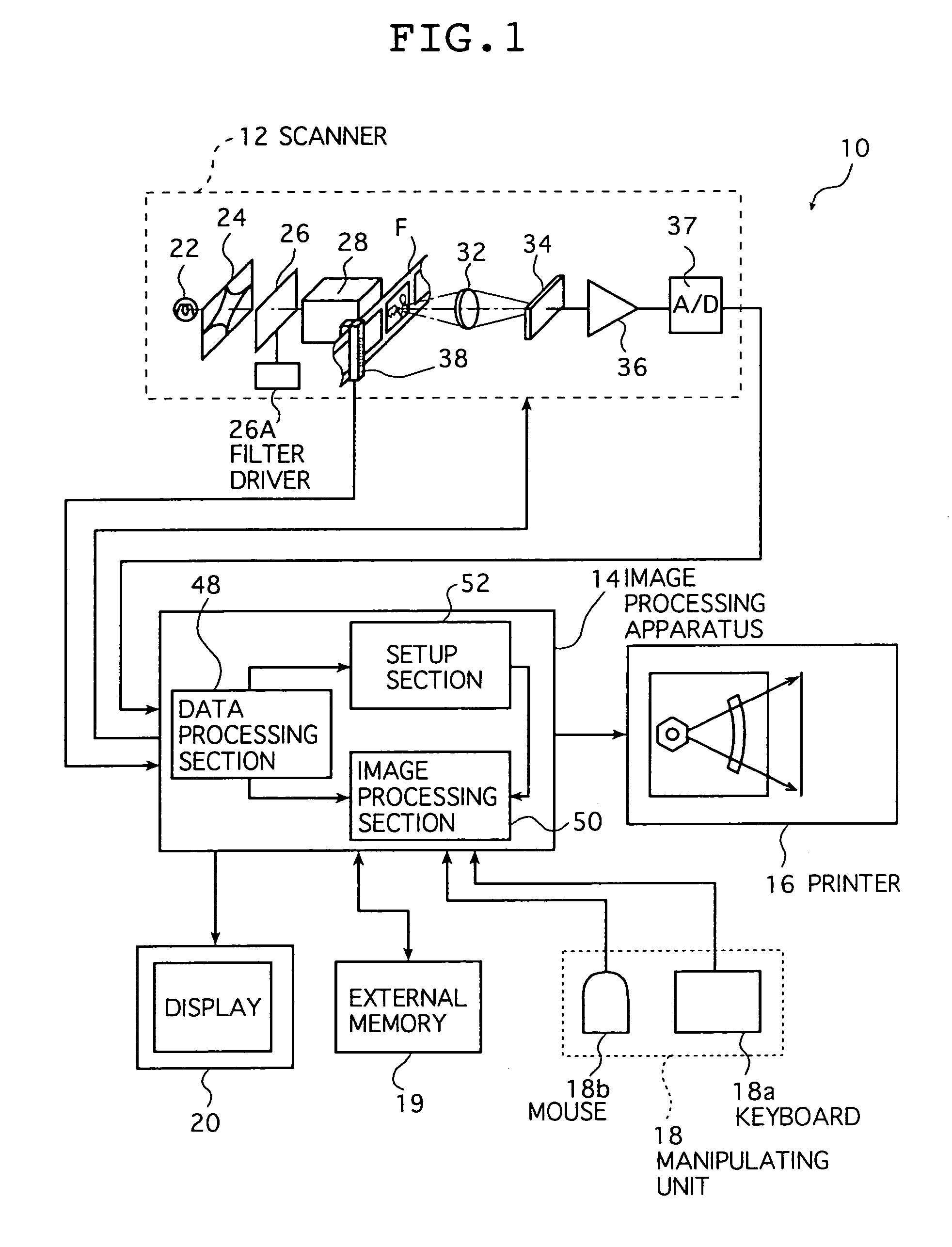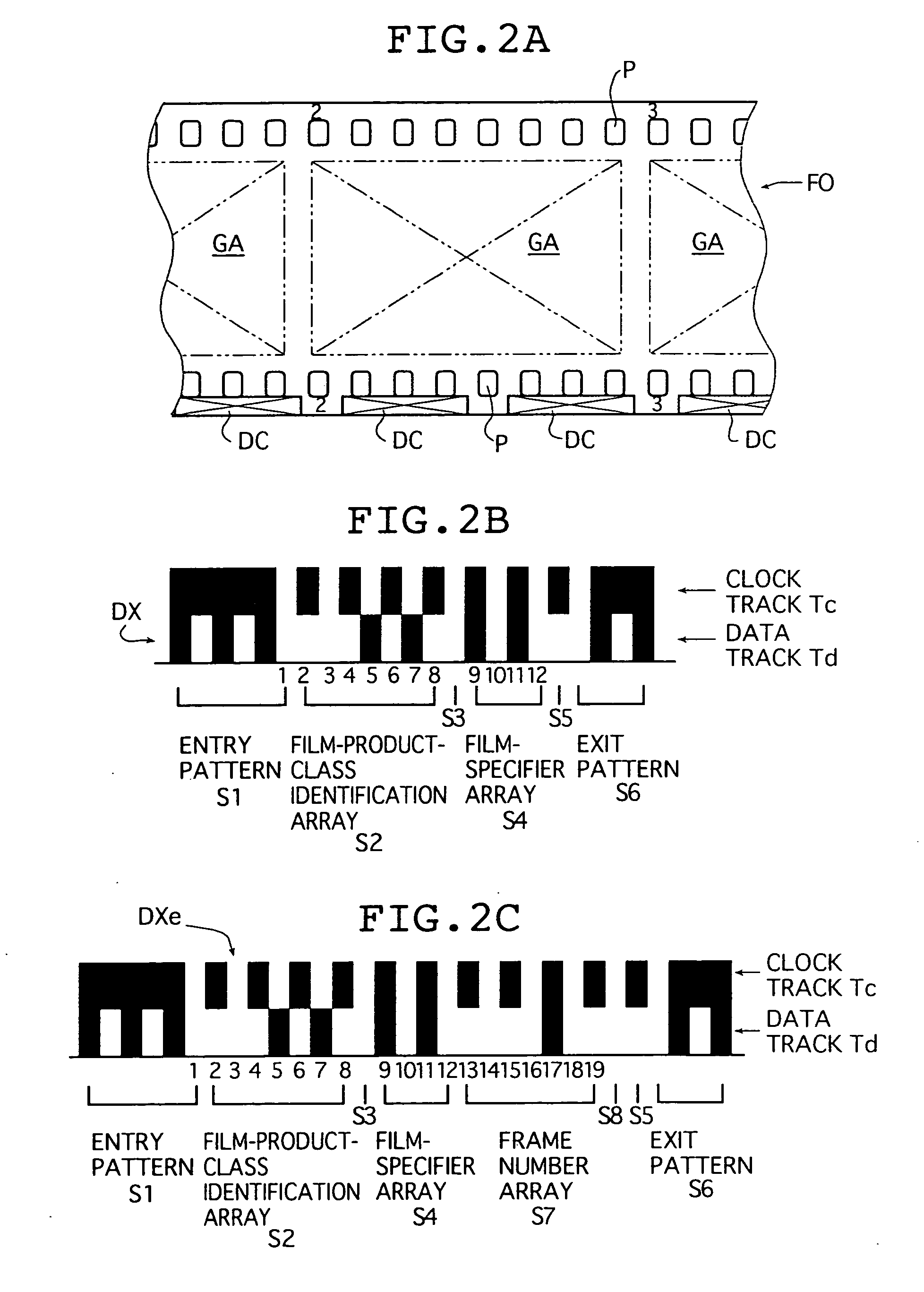Image reading method and image reading apparatus
- Summary
- Abstract
- Description
- Claims
- Application Information
AI Technical Summary
Benefits of technology
Problems solved by technology
Method used
Image
Examples
Embodiment Construction
[0051]The image reading method and the image reading apparatus of the invention are now described in detail below with reference to the preferred embodiments shown in the accompanying drawings.
[0052]First, a DX code and an expanded DX code which are used for identifying a film type in a color digital printer according to an embodiment as described below will now be described.
[0053]FIG. 2A is a schematic view showing a recording position DC of a DX code DX or an expanded DX code DXe of 135 negative film; FIGS. 2B and 2C illustrate examples of two codes, that is, a DX code DX and an expanded DX code Dxe, respectively.
[0054]As shown in FIG. 2A, when a negative film F0 of 135 size is placed with the emulsion coated side down and the frame number increasing from left to right of the figure, the DX code DX or the expanded DX code DXe is recorded in two portions for an image region GA of each frame with an ordinary full size at the bottom edge in the figure, that is, in the bottom edge reg...
PUM
 Login to View More
Login to View More Abstract
Description
Claims
Application Information
 Login to View More
Login to View More - R&D
- Intellectual Property
- Life Sciences
- Materials
- Tech Scout
- Unparalleled Data Quality
- Higher Quality Content
- 60% Fewer Hallucinations
Browse by: Latest US Patents, China's latest patents, Technical Efficacy Thesaurus, Application Domain, Technology Topic, Popular Technical Reports.
© 2025 PatSnap. All rights reserved.Legal|Privacy policy|Modern Slavery Act Transparency Statement|Sitemap|About US| Contact US: help@patsnap.com



